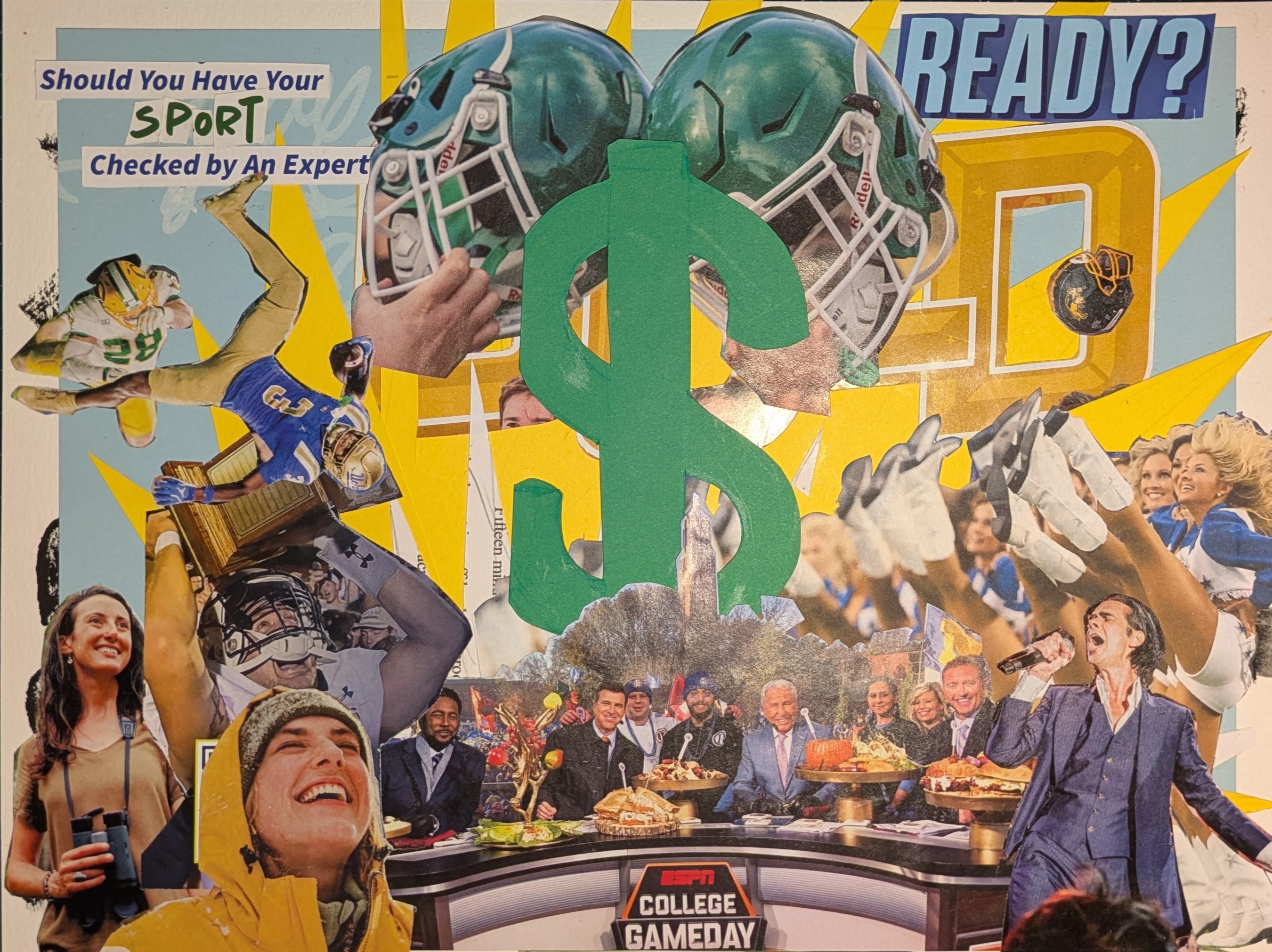There's been a considerable amount of hand wringing about how the coming IoT (Internet of Things) will shape our everyday experiences. Emerging uses of augmented reality is another technology that causes conerns (and is less distinct from the IoT than one might think). In a recent Ted Talk former NFL punter Chris Kluwe discussed how coming changes in augmented reality will change a fan's relationship to the game of American football.
While in LA toward the end of 2013 I had a similar rant while stuck in one of the city's traffic accoutrements. I stated, quite plainly, that there would always be subjective judgments in the game that would require a human official to be on hand — holding, for example, or pass interference can expose the motes in the eye of the beholder. However, there is a whole other class of rule enforcement that land squarely in the realm of absolute, quantifiable truth.
Imagine a thrilling game that is quickly headed toward conclusion. The offense marches down the field, battling not only the opponent but the clock. The ball is handed off, the running back finds a lane around the edge, turns on the afterburners while avoiding pressure and... maybe stepped out?
The most innovative use of technology the NFL can lay claim to is instant replay. And, in cases like that above, even that is inconclusive. In or out of bounds is not the only problem area where subjective observation is asked to judge absolute truth. Was a pitch between a quarterback and a player on a halfback pass was actually a forward pass? Did the quarterback accidentally scrambled beyond the line of scrimmage before launching the ball? In the midst of a scrum, did the ball break the plane of the goal?
There's absolutely no reason for this kind of dithering. With the size, durability, and feature set present with common RFID tags there should be no question when it comes to ball placement. Put RFID chips in the player's shoes, gloves, contact points like elbows and knees, and the ball. Have those things aware of where they are within the field's grid. Plotting their relationship to the sidelines, goal, and the line of scrimmage would then be trivial.
The pace of the game, tightly intertwined with excitement, increases as a portion of momentum-sapping replays are obsolete. Even better, fans are assured that calls are correct (where possible).
But assuring the correctness of the game is only the first part. Once we have a field full of connected things we get a wealth of performance data. Amazing performances are now captured in minute detail. A game, like Madden, would no longer be a pale facsimile of the gridiron. Fans would now be able to download faithful recreations of every game, every play, and every player. Individual plays would be sources of study. While fantasy football players (*really* competitive ones) regularly "watch tape", they are limited to the whatever pirate clips end up on YouTube. In a tagged world a game's dataset could be imported into a Madden-like 3d rendering engine. Suddenly numerous options open to the causal fan in the immersive pursuit of why — slow a play down, rotate the camera, see the way the center of gravity buckles and the hole suddenly appeared.
The Internet of Things, and the continuous stream of data it produces, will change our lives in ways profound and curious. It will be a deluge of information into the already swollen stream we tread. But we do have chances where we can figure things out, if we choose to. By first embracing these things in how we play (and how we experience play) we can work to sort out the unexpected compromises and conflicts before we adopt it for the everyday.
Update (2014-08-04): After I posted this there have been a couple of changes. First, the NFL is swapping out the archaic overhead play shots analyzed by teams during the game with tablet-based equivalents. It is not a heads up display, but it is a start. They also will be embedding RFID chips in players' shoulder pads this season. While I could see this is where we were going, I did not anticipate it would be this quickly.
Update (2015-06-25): I had heard speculation that the NFL was going to begin experiments collecting data from players. However, I hadn't expected that developers would already have access to that data. Available via an API, ambitious programmers will be able to access data generated via RFID chips embedded in each player's shoulder pads. This is the beginning.
Update (2023-10-01): When the Falcons played the Jaguars in London today, Disney+ and ESPN+ hosted an alternate version of the game. Called "Funday Football", player actions are animated as bobble-esque like toys within Andy's bedroom, from Toy Story. The overall experience was... odd? The beginning was filled with technical glitches while the promised "zaniness" given the situation never really materialized. For football fans, it was a poor way to watch the game. And kids (who I presume are the intended audience), were bored. At least one of the announcer's first name was Booger, but that meant the broadcast's funniest moments ("Let's see what Booger is doing," and "What's up, Booger?") were also the most unintentional. I'm not sure who this was for. Baby steps?


